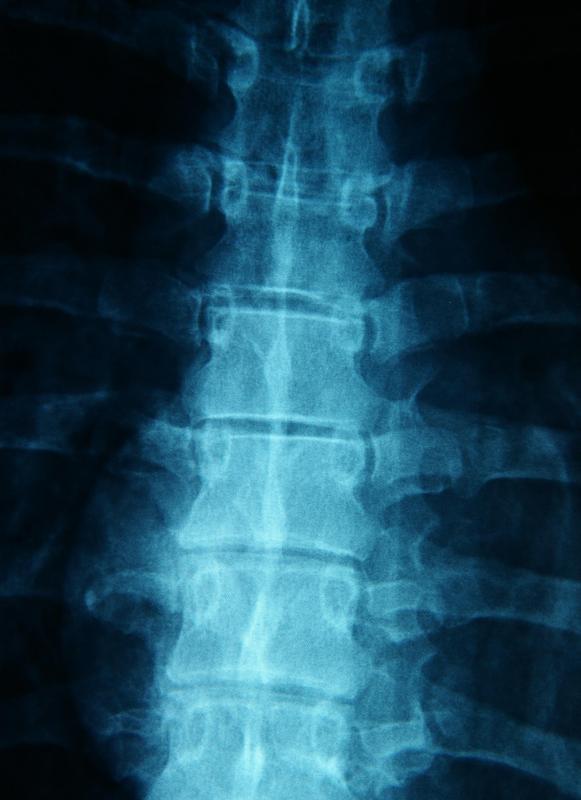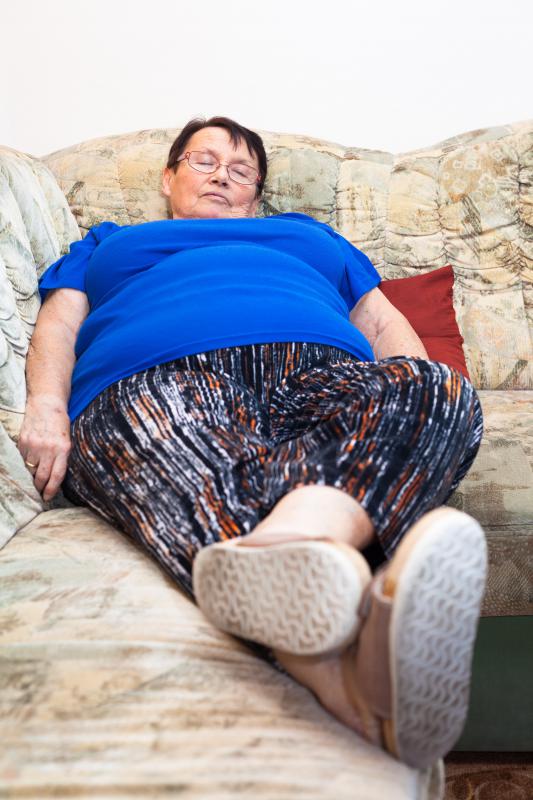At WiseGEEK, we're committed to delivering accurate, trustworthy information. Our expert-authored content is rigorously fact-checked and sourced from credible authorities. Discover how we uphold the highest standards in providing you with reliable knowledge.
What is a Swayback?
In human beings, the spinal column is naturally curved. The neck and lower back curve inward, while the upper back curves outward. When a person’s spine curves inward more than normal, this is called a swayback. Also known as lordosis, the issue typically affects the lumbar vertebrae in the curve at the lower back.
The most obvious impact of a swayback is its affect on posture. A person with lordosis will be arched forward, with the pelvis tilted forward and the buttocks appearing more prominent. If the curvature is extreme, it can affect the person’s mobility. Pain is also a common symptom, as the abnormal curvature puts pressure on the surrounding ligaments and muscles.

There are several possible conditions that can cause a swayback. Pregnant women often have this problem as they try to compensate for the extra weight they are carrying in front; obesity may also have the same effect. Tight or shortened back or hamstring muscles can cause the spine to curve excessively. Certain bone and spine disorders, such as achondroplasia dwarfism, discitis, and osteoporosis may lead to a swayback. Kyphosis, where the upper back curves outward excessively, can sometimes be accompanied by lordosis.

When diagnosing lordosis, a doctor will normally start with a case history, including when the issue started, how far it has progressed, and possible contributing factors. He or she will also usually perform a physical examination to establish the patient’s range of motion and determine if the curve is flexible, where it reverses when the person bends forward, or fixed, where it does not. Any neurological symptoms such as pain, numbness, or tingling sensations will be reviewed. The doctor may feel the spine or in some cases use X-rays and other tests to see the extent of the curve and look for abnormalities.
Treatment for a swayback normally includes physical therapy. Exercises to strengthen the muscles supporting the spine are typically used. Stretching and lengthening the back and hamstring muscles may also be necessary to increase flexibility.

In addition to physical therapy, other treatments may also be used. In young people where a swayback is developing, a brace may be recommended to limit the increase of the curve. For obese patients, diet and exercise to reduce weight can help. Pain medication can be used in conjunction with any of these treatments to limit discomfort. In severe cases, surgery may be necessary.
AS FEATURED ON:
AS FEATURED ON:
















Discuss this Article
Post your comments